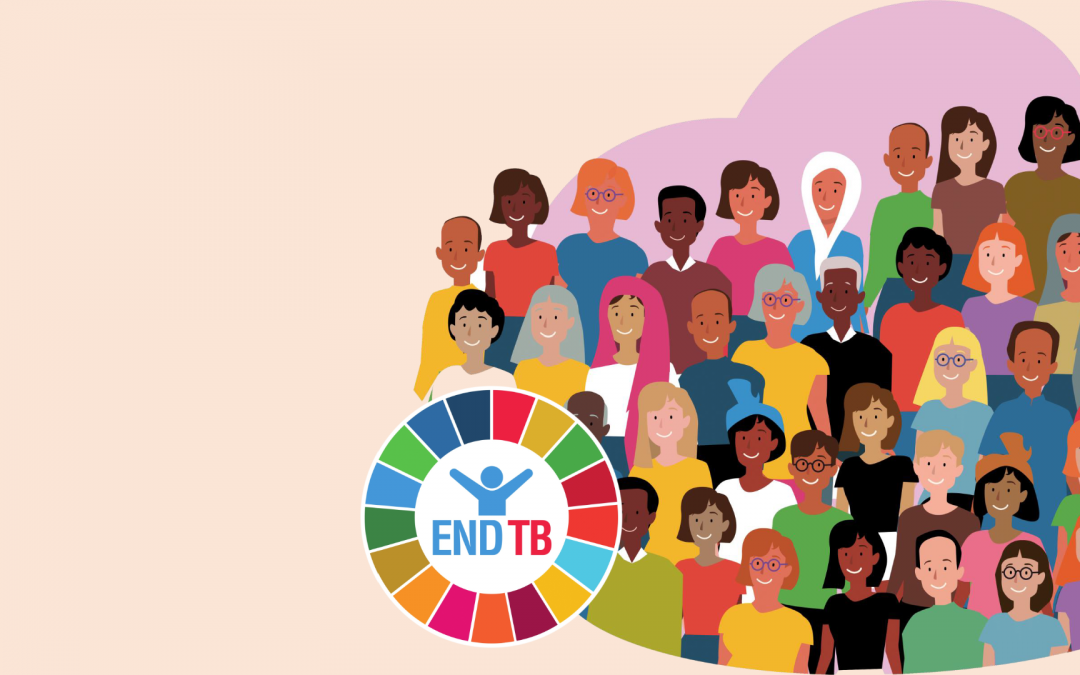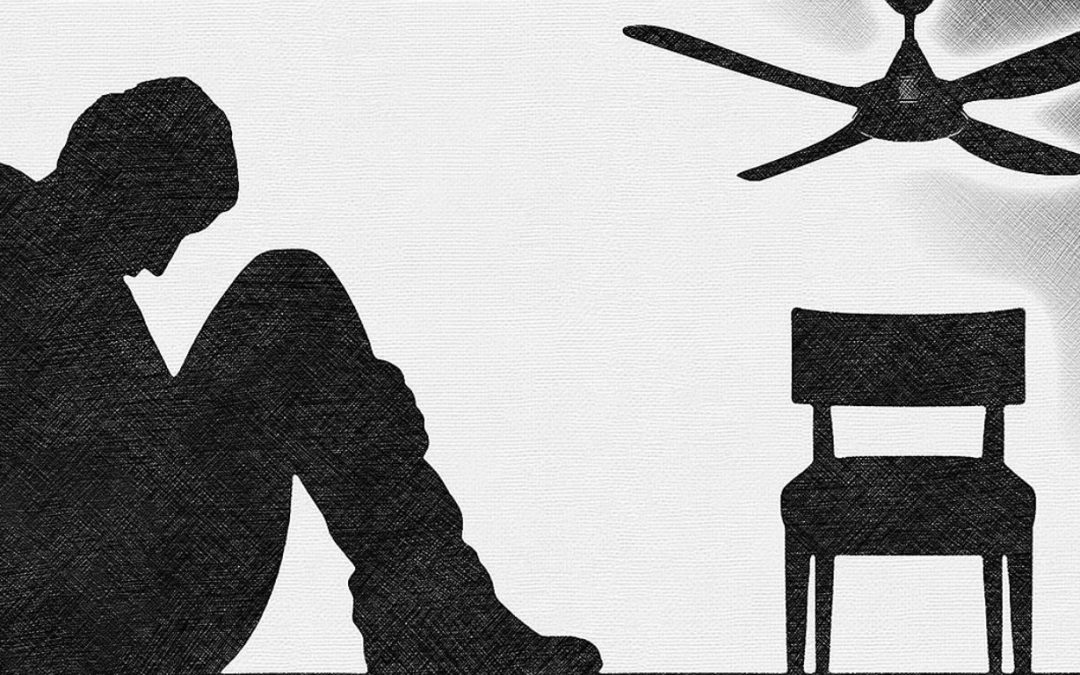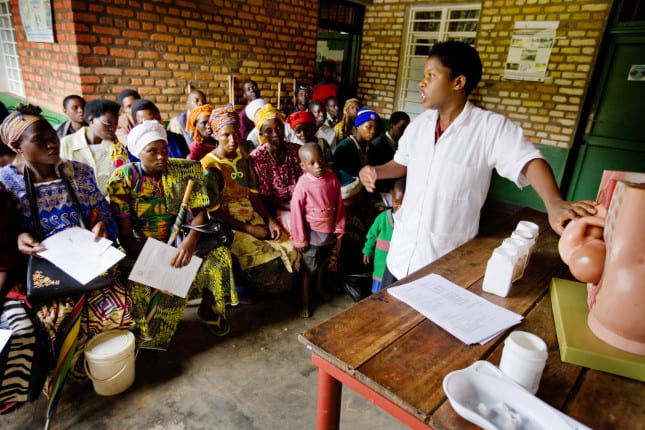
by nhe17 | Apr 14, 2022 | Dashboard
A pandemic that is targeting the under-privilege, as if the right of living and being protected from such a disease is dependent on one’s status and unfortunate living conditions.
Tuberculosis continues to be a huge peril disease against the human population and according to WHO, TB is the leading cause of death in infectious diseases killing over 1.5 million people around the world in 2020 alone, 95% of which is occurring in developing country.
The below is a reflection of the data from the world data index showing the uneven distribution of TB incidence per 100,000 in 2020 that is occurring. A steady decrease in developed countries , however a remaining major problem in developing countries.
The World Health Organization (WHO), following the guidelines of the United Nations’ Sustainable Development Goals (SDGs), plans to eradicate the pandemic by the year 2030. The goal is to reach a 90% reduction rate in the number of deaths due to TB by the year 2030, and 95% by 2035.
Actions to be taken:
- Allocate funding on providing chemoprophylaxis (the number one treatment for TB) to developing countries to increase access for the underprivilege and decrease spreading of TB.
- Adjust healthcare policies and increase campaigns for free BCG vaccination in developing countries , making it mandatory as with many developed countries
- Mass screening tests to detect dormant or active TB, to decrease spread especially with over-populated settings and among the immunosuppressants.
- Increase Awareness campaigns to educate the population on the signs and symptoms and importance of preventive measures to be taken for a better chance of survival.
The key to an end of the pandemic starts with you!
I am a healthcare worker and I urge you after this blog to do the following:
- Check your vaccination history on BCG, along with your family.
- Educate your self with the signs and symptoms: persistent cough with bloody secretions , severe chest pain and shortness of breath , weight loss and generalized weakness , fever and night sweats
- Tuberculosis may be dormant, meaning asymptomatic for years for that if you have never been tested, urgent medical screening is required.
- If you experience any of the signs and symptoms , seek immediate medical help
- Keep your distance when engaging in a conversation and avoid crowded places!

by Salem G. | Apr 14, 2022 | Dashboard, Visualization
Suicide is something no one wants to talk about, the majority of people who are feeling down don’t openly talk about it. The highest population that is being affected are countries that are surrounding Russia, and in South Africa. There are 800k people commit suicide each year, this is due to many economical issues in these countries. Imagine Karim a husband and a father of 2 living in a country where the basic human needs are neglected. Now Karim is struggling to find a job due to the high unemployment rate, this means he is not able to feed his wife and kids. Imagine being in his place in a country with a 26% unemployment rate. People that are unemployed have a higher chance of commit suicide due their mental health taking a hit this could spiral own a dark hole which is hard to come out off. Unemployment forced 40% of the population to suffer from severe or moderate food insecurity and this is the disruption of food intake or eating pattern due to the lack of money and other resources. Now Karim can’t just feed his family but also can’t get the basic human needs.
All these problems correlate strongly with the Social protection and Labor Programs when these programs are lacking the result were higher suicide mortality rate. These programs help the population in managing risks and protect them from food insecurities through various methods. Poland has a high social program and the results of the suicide mortality rate is significantly lower compared to Lesotho which is the opposite with high suicide rates and low social program . This indicates to lower suicide rates we must increase the aid to the population by offering labor market, unemployment benefits, and other programs. Now Karim can relax and calm down as help is on its way to assist him and other people who are in need.

by Karim Ahmad | Apr 14, 2022 | Dashboard, Visualization
“The enemy doesn’t stand a chance when the victim decides to survive.” – Rae Smith
How Is It Justified?
Globally, 1 in 3 women have been subjected to partner violence, and it becomes worst when women consider this violence justifiable. Early marriage is a major reason that women think it’s okay to be beaten up by their spouses, usually, spousal age differences, power inequalities, un-continued education, and a lack of female autonomy are all common features of early age marriages. These factors have been linked to an increased risk of domestic violence and affected women’s awareness of their entitlement, self-esteem, status, and their sense of empowerment.
In most African countries and some Asian countries, women believed spousal violence is justified and that can be linked to high percentages of female adolescents out of school and early marriages in these countries.
Even globally numbers are still worrying, the average number of women who believed a husband is justified in beating up his wife is still Relatively high. With the average number of female adolescents out of school being steady over the past 22 years, marriages at a young age are still taking place and resulting in more domestic violence since spousal age difference can make women more vulnerable to health risks and social Isolation by creating power dynamics. These power dynamics can increase girls’ vulnerability to emotional, physical, and sexual abuse.
According to the WDI (World Development Indicators) data some of the justified reasons for domestic violence were:
- When women argue with the husband
- When she burns the food
- When she goes out without telling him
- When she neglects the children
- When she refuses sex with him
Taking Action!
So, you might ask, what can be done? Well, a lot actually. To start with, empowering young women are essential. This can be done through:
- Enhance girls’ access to a high-quality education
- Empower girls with information, skills, and support networks
- Provide financial assistance and incentives to young women and their families
- Educate and rally parents and the community members
Education is crucial in preventing females from marrying as adolescents. In fact, the longer a girl stays in school, the less likely she is to marry and have children before she toms 18 years old. Furthermore, education ensures that girls have the skills and information they need to find work and support their families. This can aid in breaking the cycle of poverty and preventing child marriages caused by extreme poverty and/or financial gains.
Final Recommendations
Education, economic status, and age gap are the main factors behind early marriages and domestic violence. It’s recommended to Promote education and economic opportunities for girls & Employ behavior change communication and community mobilization techniques to change social norms regarding age and marriage.

by khh09 | May 10, 2021 | Uncategorized

Meet Ahmad
Ahmad is a young and healthy adult who likes to engage in various sports. However, he suffers from severe cases of asthma and regularly takes prescribed medications along with his inhaler. Like many people his age, Ahmad is very ambitious about his future and hopes one day that he can become a world star athlete.
Unfortunately, Ahmad is living in Qatar which is known to have a very harsh environment that is filled with air pollution and CO2 emissions that can risk his healthcare and well being.
Let’s Examine what Ahmad is up against!
The following Visual is a Bar Chart displaying the average CO2 emissions (metric tons per capita) in Arab countries
Observations

Ahmad was simply shocked!!
Although Ahmad knew that Qatar had very high levels of air pollution, he was not excepting it to be the highest among all other Arab countries. Ahmad had to act fast and think about ways to convince his parents to finance his journey to a cleaner country with low levels of greenhouse gas emissions. However, the previous graph was not entirely convincing for his father since he wanted to have a more visual understanding of the countries.
A better Visual?
The following Visual is the same visual presented before but projected on the map of the Arab World
Before Deciding
 Although it seemed Obvious for Ahmad to travel to any of the countries that had low levels of C02 emissions, Ahmad’s Father wanted his son to have a good future prospect. The father demanded to know which of these countries had low levels of unemployment. After a lot of hard work, Ahmad was able to come up with a great visual that explains exactly what his father wants.
Although it seemed Obvious for Ahmad to travel to any of the countries that had low levels of C02 emissions, Ahmad’s Father wanted his son to have a good future prospect. The father demanded to know which of these countries had low levels of unemployment. After a lot of hard work, Ahmad was able to come up with a great visual that explains exactly what his father wants.
Now That’s Clearer
The following Visual is a Stacked Bar chart displaying the average CO2 emissions (metric tons per capita) and % of unemployment in Arab countries
Problem Solution
| Potential Solutions |
Solution Validation |
Recommendation |
| For Better Future: Convince Ahmad’s father to finance his travel to Saudi Arabia |
it has less CO2 levels (12.62) with slightly higher unemployment rate (5.58%) |
Try Exploring other Non-Arab Countries that meet Ahmad’s requirement |
| For Better Health: Convince Ahmad’s father to finance his travel to Lebanon |
it has significantly less CO2 levels (2.96) but a higher unemployment rate (8.63%) |
If to stay in Qatar for guaranteed employment, Ahmad should drastically change his lifestyle and become more health cautious |
Conclusion
 Ahmad has choices There is no “perfect” solution for Ahmad’s Situation but he has a few options to explore. The problem in our Arab World is that we are (in most cases) required to sacrifice important aspects of our lives to improve other aspects. This dilemma is affecting so many people across the Arab World, especially during these hard times.
Ahmad has choices There is no “perfect” solution for Ahmad’s Situation but he has a few options to explore. The problem in our Arab World is that we are (in most cases) required to sacrifice important aspects of our lives to improve other aspects. This dilemma is affecting so many people across the Arab World, especially during these hard times.

by ami31 | May 9, 2021 | Dashboard, Visualization
Childbirth is considered to be a landmark and joyous moment in any woman’s life. And although health experts say that no two childbirth experiences are the same, it is quite astounding that this can, in many cases, reach the extreme of death. According to statistics released by UNICEF, the World Health Organization (WHO), the United Nations Population Division, United Nations Population Fund (UNFPA) and the World Bank Group, around 2.8 million pregnant women and newborns die every year of preventable causes [1]. This turns childbirth into an event to be feared as it poses a significant threat to the lives of many women across the globe. According to the United Nations’ , quality education is defined as one the of the seventeen sustainable development goals (SDGs), so how can education help mitigate childbirth mortality?
“Pregnancy is not a disease. It should not lead to deaths. Every maternal death should be regarded as an abnormality.” – Vivianne Ihekweazu, Director of the Nigerian Health Watch [2]
How are Childbirth Deaths Related to Education?
The World Development Indicators data from the World Bank [3] allows us to look into the impact of education on childbirth by exploring the percentage of births that are handle by skilled health staff. In the figure below, we plot the average life expectancy at birth in years with respect to the average percentage of births attended by skilled staff for each country. There is a clear positive correlation between the two variables. We therefore conclude that children who are delivered by skilled health workers during labor are more likely to have a higher life expectancy.
However, the impact of having educated people overseeing child delivery does not stop here. Unfortunately, carrying out child delivery without proper understanding of the necessary health procedures has more alarming implications. In the dashboard below, we notice a sharp decrease in both maternal mortality (women dying during labor) and neonatal mortality (newborns dying at birth) in countries where more childbirths are handled by skilled health workers. This implies that many of the childbirth related deaths can be attributed to the lack of necessary health skills.
Where are these Childbirth Deaths Mostly Occurring?
Below we find the places that suffer the most from this by selecting the countries that have a below average percentage of births attended by skilled staff.
By looking at the geographical distribution of these countries we unsurprisingly find that the majority is located in Africa. Furthermore, we notice that the educational attainment in these countries is significantly lower than countries that have more professionally handled childbirths. This is an expected causality since to have more skilled people perform childbirth procedures we need more educated people.
So the Solution Is, Educate More People!
“The benefits of education permeate all walks of life right from the moment of birth.” – Irina Bokova, Director-General of UNESCO [4]
In light of the above, we clearly need to have more educated people that are able to professionally handle childbirth procedures. This is especially needed in developing countries where childbirth mortality is more pronounced. A key approach strategy here is to educate the local birth attendants and community midwives that are already active in these communities. These local and community health workers are already more connected to the women and families in their towns making their newly found skills more accessible and allowing them to spread health awareness to pregnant women in their communities [5]. Finally some communities in rural Africa are located in remote locations faraway from any medical supply and service centers. Therefore, setting up portable medical outposts near these towns would greatly enhance the quality of services provided by birth attendants.
References
[2] E. Onyeji, “Despite having highest maternal mortality in Africa, Nigeria’s situation still underreported – Report,”
Premium Times Nigeria, 03-Dec-2020. [Online]. Available:
https://www.premiumtimesng.com/news/headlines/429266-despite-having-highest-maternal-mortality-in-africa-nigerias-situation-still-underreported-report.html.
[3] https://datatopics.worldbank.org/world-development-indicators/
[4] “Education can save lives, help reach sustainable development goals – UN agency,”
UN News, 18-Sep-2014. [Online]. Available:
https://news.un.org/en/story/2014/09/477702-education-can-save-lives-help-reach-sustainable-development-goals-un-agency.
[5] D. Shikuku and C. Ameh, “Investing in midwifery training and education for improved maternal and newborn outcomes,”
On Medicine, 19-Mar-2021. [Online]. Available:
https://blogs.biomedcentral.com/on-medicine/2021/03/19/midwifery-training-education-maternal-newborn-outcomes-isrctn/.








